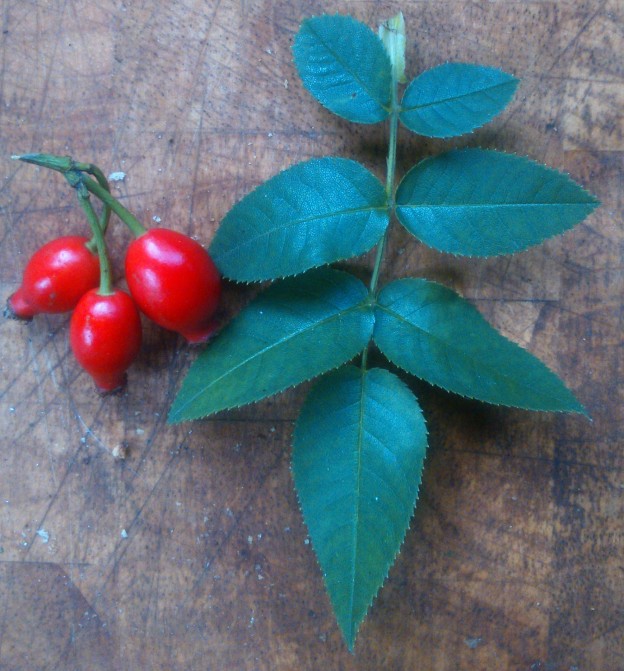Rosehips are the fruiting body of a rose, all roses have them but because many gardeners “dead head” their ornamental rose bushes to keep them in flower, you may not see many in the urban garden. Britians hedgerows and towpaths are full of them however, and one only need take a short walk in the fall to find these ruby red treasures shining brightly among the barren bushes and rustic backdrop of the autumn colours.
Perhaps more than any other wild flower, the humble rose has played an important part in the history of foraged food in the United Kingdom. During the rationing periods of World War II the British public was widely encouraged to “Dig for Victory” growing foods in their gardens and allotments both for those at home and for the men in the trenches. Along side that encouragement came the public health advisement for mothers to look to the public towpaths and hedgerows for the ever abundant Rosehip and it’s valuable source of vitamin C.
You only need to ask the older generation to hear stories of having been given a daily teaspoon of Rosehip syrup by their mothers. This simple, yet often sickly sweet source of vitamins fell by the wayside after the war when more attractive fruits such as oranges were again available to the public. Passed by often in today’s abundance, the humble and beautiful rosehip remains what it always was, a free and potent contributor to the foragers Lauder.
Whilst the syrup may not be your idea of heaven, and requires some preparations, the rosehip is quite versatile. Rosehip and crabapple jelly is now considered an artisan treat and even easier Rosehips tea, can quickly be made by topping and tailing the fruits and soaking in hot water. You will want to strain the tea, or anything you make with them however to ensure you aren’t ingesting any of the little hairs that surround it’s seeds. The hairs are the key ingredient to the childhood prank “itching powder” and as such can be rather uncomfortable!
